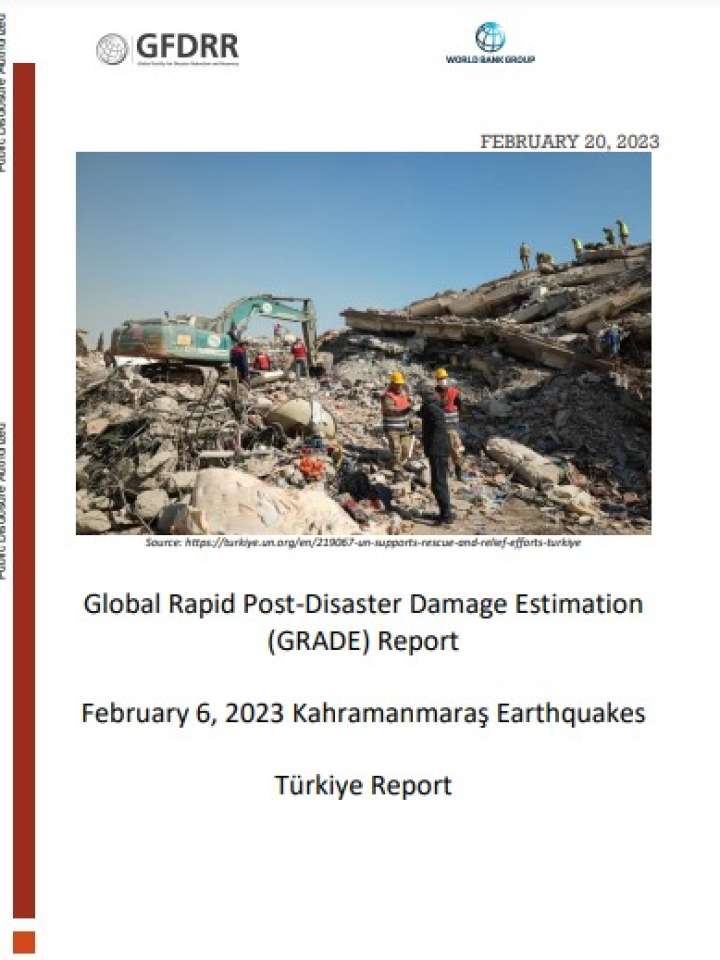Global Rapid Post-Disaster Damage Estimation (GRADE) report: February 6, 2023 Kahramanmaraş earthquakes - Türkiye report
This report provides an early and preliminary estimate of the direct damage costs caused by these earthquakes, which in turn will inform the response of the World Bank Group and its partners and support planning for recovery and reconstruction. The report is based on a rapid and remote post-disaster damage assessment that follows the established GRADE methodology.
Some of the key observations and findings from the report are:
- The most extensive damage to buildings and infrastructure occurred in Hatay, Kahramanmaraş, Gaziantep, Malatya and Adıyaman provinces, which together account for 81% of the estimated damages and are home to around 6.45 million people (around 7.4 percent of the total population of Türkiye).
- Damage as a proportion of total building/infrastructure stock is highest in Hatay, Kahramanmaraş, and Adıyaman. In Hatay, the damage ratio is almost 42 percent for residential buildings, 40 percent for non-residential buildings, and almost 34 percent for infrastructure.
- The regions that include the provinces most affected by the earthquakes also have some of the highest poverty rates in Türkiye and host more than 1.7 million Syrians under Temporary Protection (SuTP) comprising almost 50 percent of total SuTPs in country. The higher poverty rates and hosted SuTP will be key considerations for the recovery and reconstruction.
